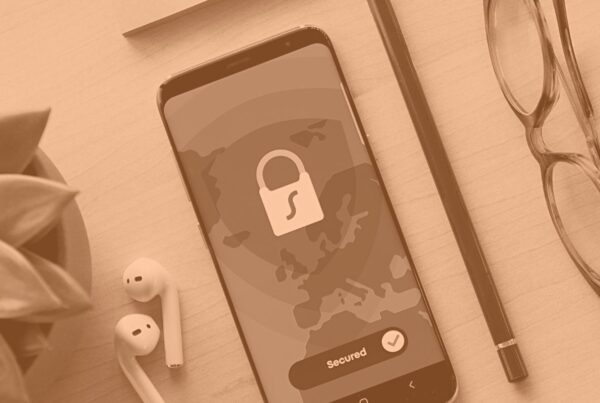Networking at in-person events is seamless. It can happen serendipitously: when people bump into each other in the hallway or when they are in the middle of grabbing a cup of coffee. But no such thing is possible when it comes to virtual networking, which is why this is one of the biggest virtual event concerns that event planners deal with.
In today’s episode, Nick, Will, Dustin, and Chantel reminisce about the olden days when they could strike up a conversation about the weather to get the conversation going. But more importantly, they share what their clients’ main concerns regarding virtual networking are and what they have to say to them.
Virtual Networking: Introductory Thoughts
Chantel prefaces the conversation about virtual networking by saying that she feels like there’s no good way to do it. “But clients want to do it! They tell me to give them solutions and ask me what platforms should they use. Honestly, I think they’re all kind of bad. It’s hard to build connections with presenters or attendees through a screen. We should be further along this far into the pandemic. Is that just me?”
“As an industry, we were able to take platforms for content distribution,” says Nick. “But human connections require designers and planners to rethink how they do it, which I don’t think they were in the position to do. What happened in the last year were strategies and designs that were already existing and platforms that were already existing. Both sides really didn’t do anything new. They just tried to put a square peg in a round hole. You just saw a bunch of people taking no chances and just trying to do their best on adaption versus native design.”
Dustin thinks that clients tend to romanticize in-person networking opportunities. “We were giving a lot of credit to in-person events in the past and the amount of connections that were truly made. In the last 10 years, you’ve seen a major shift where most people actually connect online at the event. They find a tweet that they like and that’s how they create that connection. I’m not sure that this world of connectivity in person really existed and was thriving as much as people like to think it was.”
The Banes Of Virtual Networking
It’s generally agreed that in-person networking is much better than virtual. But is that really so? “It feels like face-to-face is better because it’s being scored on a really vague basis,” says Nick. “That vague way doesn’t really come into play for virtual networking. But nonetheless, virtual should be better. I’ve experienced so many really painfully awkward ways that platforms have done networking. For example, when they use the timer.”
Chantel shares her frustrations with virtual networking. “It is much more awkward to leave a virtual networking session than it is an in-person. You can’t leave a virtual networking session by walking over to so-and-so, especially if it’s one-on-one because then you’ve just left this person by themselves for the remainder of that rotation.”
She continues. “There’s so much pushback from clients. They ask: ‘Why aren’t my attendees talking in the chat? Why isn’t there so much engagement?’ But honestly, they would be so mad if their attendees were chatting it up while somebody was speaking on the stage. So why is it that we want people to be half paying attention to the speaker and then being in the chat? Chat has a function, right? You can get people hyped up at the beginning and it’s great for questions. But do you really want your chat to be blowing up the entire time? Because then, people are not paying attention.”
Dustin agrees fully and adds a few of his own thoughts. “If you want an active chat, you have to ask for it. If you want conversation to take place in the chat, you have to prompt that to happen. It has nothing to do with the platform, but with who’s hosting your event.”
At in-person events, attendees using their phones generally meant a bad thing. “Presenters wanted to do such a good job on presentations that attendees wouldn’t even look at their phones. That was a metric that has been thrown around for the last 10 years,” adds Nick. And now, it’s the other way around.
Defining Success In Virtual Networking
Moving on to solutions for more successful virtual networking, Nick shares some of his ideas. “Maybe it’s our job when onboarding the clients to ask what does success of the event look like. We have those questions when it comes to in-person events. When we look at the functionality of our platforms we should have similar types of questions. What does success with the chat look like? Does it look like ebbs and flows in the lulls between the conversation or the presentations? Do you have peaks and valleys that coincide with the content being distributed or do you want to engage in the midst of presentations?”
“Let’s say your attendees would have a conversation with 10 people and create a new valuable networking connection or strengthen a connection that’s already made. Is that a good ROI? Most would say yes,” explains Nick. “In virtual networking, that’s really easy to accomplish. In fact, with any kind of algorithmic benefit, it’s way easier to crush that because you’d only be talking to people that you actually should be talking to. There is some intelligence behind that. If we were to examine the ROI on the in-person networking, we probably would be less than impressed. And then on the virtual, it could be so much better if we design it that way.”
Give People Options!
Next up, Will joins the conversation about virtual networking. “I’ve always made the case that virtual audience engagement is a Choose Your Own Adventure. I push the chat and I use Google docs. When I’m in Zoom, I do the virtual wave. I do all these different things.” But Will also understands that some might think that there is too much going on. “My initial reaction is to tell them to deal with it. This is how I roll. But then I realized that they didn’t have to engage on every single thing I’m offering.”
“Give people options on how they consume your event,” says Nick. “That’s one of the biggest failings of planners: they believe that there is a singular way for someone to consume your event, to engage at your event, to attend your event. As opposed to giving attendees opportunities to find their own way and engage with it on their own terms. If you look at it from a persona-based approach and look at your data, you can say you found that there are four different ways that people are attending this event and not taking that as a loss.”
Sometimes, we make virtual networking so complicated, but if you get the right kind of people together, they will find ways to network with each other,” adds Will.
Virtual Networking: The Power Of Data
Virtual networking is easily quantifiable, but in Chantel’s opinion, that doesn’t make it easier to understand than in-person conversations. “People around are making connections in hotel ballrooms, but you don’t have real numbers. You’re just seeing that people look like they’re talking to one another. Then, you go into virtual networking and you have all these analytics and data. And you wonder what does any of this mean? 50% of people made one connection. Is that good or bad? I don’t think we’re comparing apples to apples. We don’t have any real data for connecting in person. It’s not fair to say that networking is better one way or the other. We’re not sure yet.”
Personally, she doesn’t like virtual networking because she’s shy. But there’s been one networking event that was an exception. “The whole concept was you introduced yourself and you told the person what you did and vice versa, and then you had 30 seconds to decide. Either you keep talking or you would leave since there’s no point in continuing the conversation. It was so great because nobody got offended.”
Let’s Go On Braindates!
Speaking of great practices, Will mentions braindates. “C2 do the braindates where you fill out a profile in advance. The algorithm and the computer tells you who would be a great person for you to chat with. They send them an invite and set up your braindate. You go to the braindate lounge, you sit down, everybody arrives at the same time, you’ve got 10 minutes or 15 minutes and you use it. You have great chats. I loved it because the system that they use to connect you is so smart.”
“It’s not just about what I want, it’s also about what I have to give,” adds Dustin. “It prepares you to have really great fast conversations. And I still have connections from C2 of people that I sat down with.”
Will explains that the platform is very basic, which definitely goes a long way in the world of virtual networking. “It’s just a topic that you want to have and then people can choose to go to that topic or not. It’s almost like a crowdsourced agenda in some ways.”
Want To Network? Up Your Game!
The last thing that the Event Brew crew has to say about virtual networking is that each person should do what they can to look as approachable and presentable as possible. Great virtual speaker gear can go a long way. “One of the most underutilized things that is a great icebreaker on virtual events is asking what’s in the background of your video,” says Nick. So make it interesting!
“If you really want to be successful at networking and you want more people to open up to you, you have to start upping your game. Is it better sound? Maybe it’s a better lighting,” he suggests. “And please, clean your camera,” adds Dustin.
In conclusion, it’s important that event planners understand that virtual events cannot accomplish the same things in the same ways as in-person events. Virtual networking might be challenging, but it’s not impossible. Attendees definitely appreciate it when they have various ways of engaging available to them. And while it’s great to see the chat going off, it’s not always the best indicator of virtual attendee engagement!
Want to learn more? Make sure to download our free virtual event planning checklist and see what else goes into creating the best possible experience for your virtual audience!












